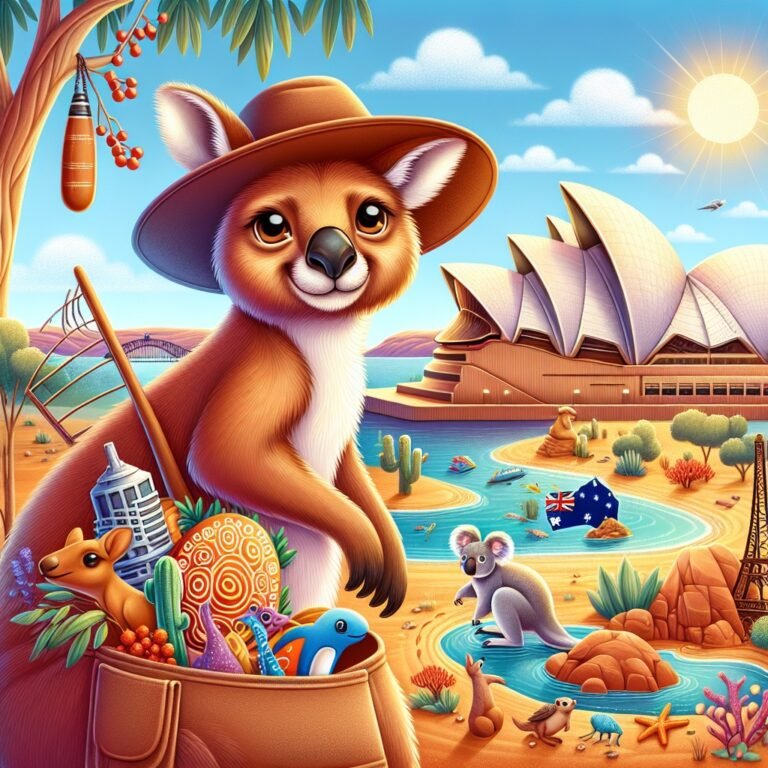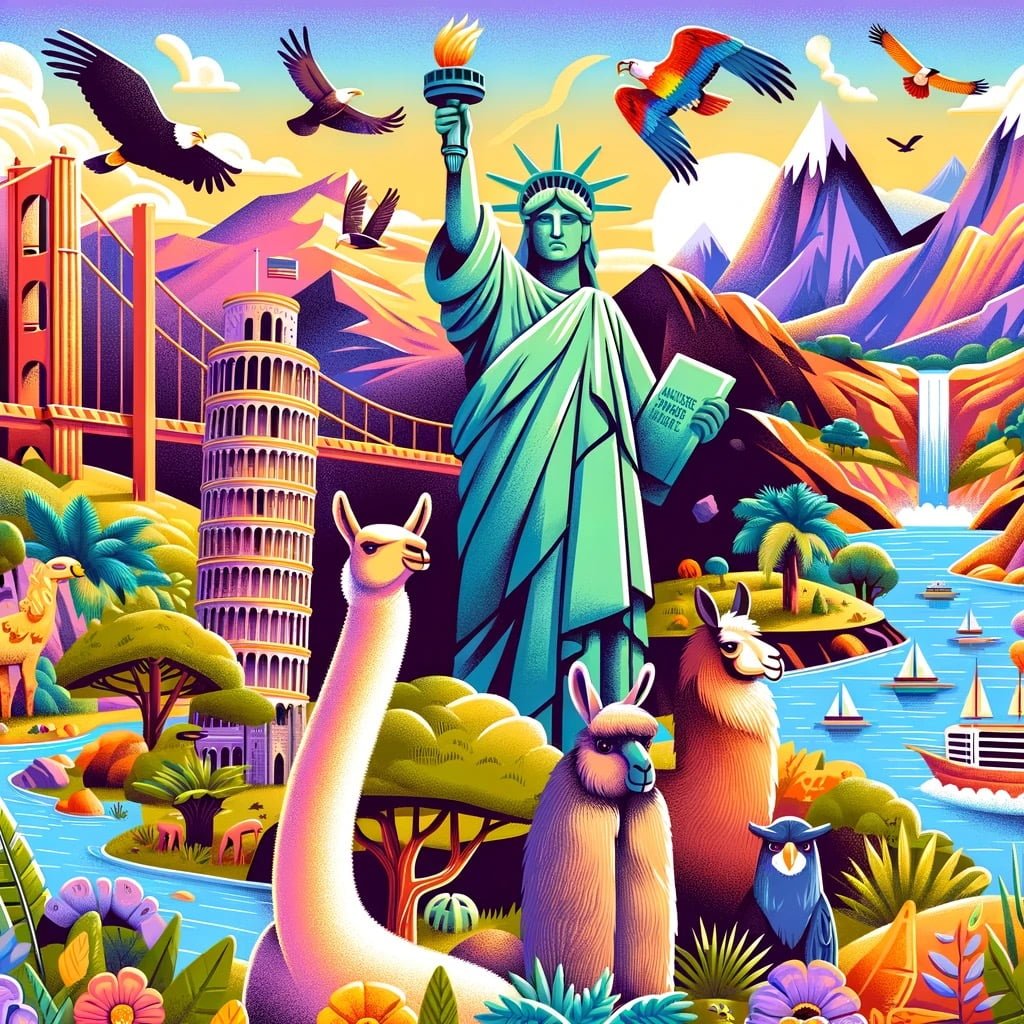Welcome to our latest post on Australia Facts For Kids! Join us as we delve into the amazing world of Australia and uncover fascinating information about the Great Barrier Reef, kangaroos, Tasmanian devils, the unique echidna, and much more. From the largest living structure on Earth to the deadliest sea creatures, Australia is a land of endless wonder and excitement waiting to be explored. Whether you’re a curious child or a lover of knowledge, there’s always something new and exciting to learn about Australia. So come along on this journey with us and discover the incredible facts that make this country so special. Get ready to be amazed by all that Australia has to offer!
Australia Facts For Kids
1. The Great Barrier Reef is the Largest Living Structure on Earth
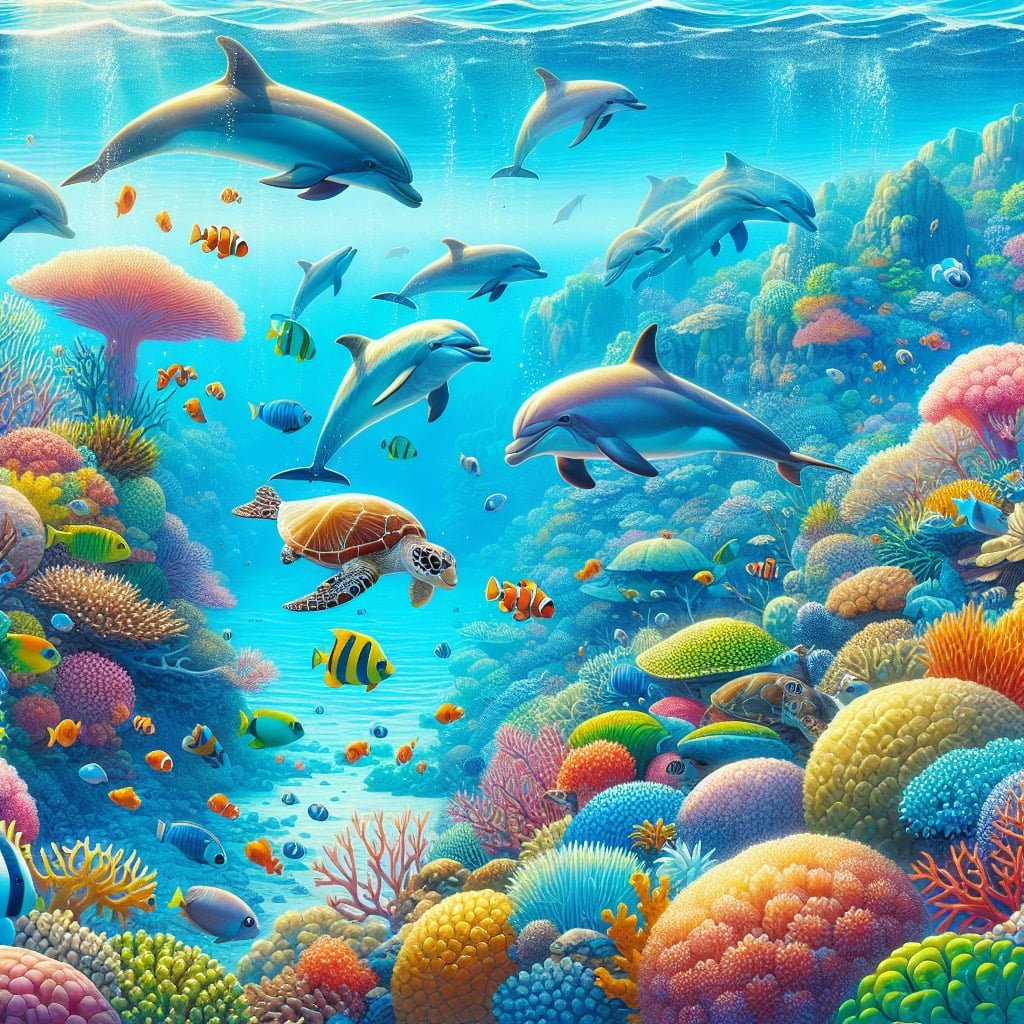
For younger kids: The Great Barrier Reef is like a huge, colorful underwater city for fish and other sea creatures!
For older kids: Stretching over 1,400 miles, the Great Barrier Reef is made up of billions of tiny organisms called coral polyps, creating an incredibly diverse ecosystem beneath the sea.
Detailed explanation:The Great Barrier Reef, located off the coast of Australia, is truly a marvel of the natural world. Stretching over 2,300 kilometers, it is not only the largest coral reef system in the world, but also the largest living structure on Earth. This incredible ecosystem is made up of over 2,900 individual reefs and 900 islands, all teeming with an astonishing variety of marine life.
One of the most impressive aspects of the Great Barrier Reef is its sheer size. It covers an area of approximately 344,400 square kilometers, making it larger than the entire country of Italy. This vast expanse of coral provides a habitat for an incredible diversity of species, including over 1,500 species of fish, 411 types of hard coral, and countless other forms of marine life. It is estimated that the reef is home to one-third of the world’s soft corals and a quarter of all marine species.
The Great Barrier Reef is not only important for its biodiversity, but also for the crucial role it plays in supporting the local economy. It is a major tourist attraction, drawing millions of visitors each year who come to snorkel, dive, and explore its stunning underwater landscapes. Additionally, the reef supports a significant fishing industry and provides protection for coastal communities from storm surges and erosion.
Unfortunately, the Great Barrier Reef faces numerous threats, including climate change, pollution, and overfishing. Efforts are being made to protect and preserve this vital ecosystem for future generations, but it is essential that we continue to raise awareness about the importance of safeguarding this natural wonder. Australia Facts For Kids can help educate the next generation about the value of the Great Barrier Reef and inspire them to take action to protect it.
Australia Facts For Kids
2. Kangaroos Can’t Walk Backwards

For younger kids: Kangaroos can only hop and can’t walk backwards like we can!
For older kids: Due to their powerful hind legs and unique skeletal structure, kangaroos are unable to move their legs independently and thus cannot walk backwards.
Detailed explanation:One interesting Australia Facts For Kids is that kangaroos are unable to walk backwards. This fact is due to the unique anatomy and skeletal structure of these iconic Australian animals.
Kangaroos have very powerful hind legs that are specifically adapted for hopping and jumping forward. Their long, strong tail provides balance while bouncing along at high speeds. Unfortunately, these same physical characteristics make it nearly impossible for kangaroos to move in a backwards direction.
When a kangaroo tries to move backwards, its hind legs and tail are not designed to support this type of movement. Their legs are built for powerful forward propulsion, not for the flexibility and dexterity required for walking backwards. As a result, kangaroos tend to pivot on their front legs and hop in a semi-circle to change direction, rather than attempting to walk backwards.
In addition to their physical limitations, kangaroos also rely heavily on their sense of sight to navigate their surroundings. Moving backwards would require them to look over their shoulder, which is not a natural or efficient movement for these animals.
Overall, the inability of kangaroos to walk backwards is a fascinating example of how their specialized anatomy and behavior have evolved to suit their unique way of life in the Australian outback.
Australia Facts For Kids
3. The Tasmanian Devil Makes Eerie Noises
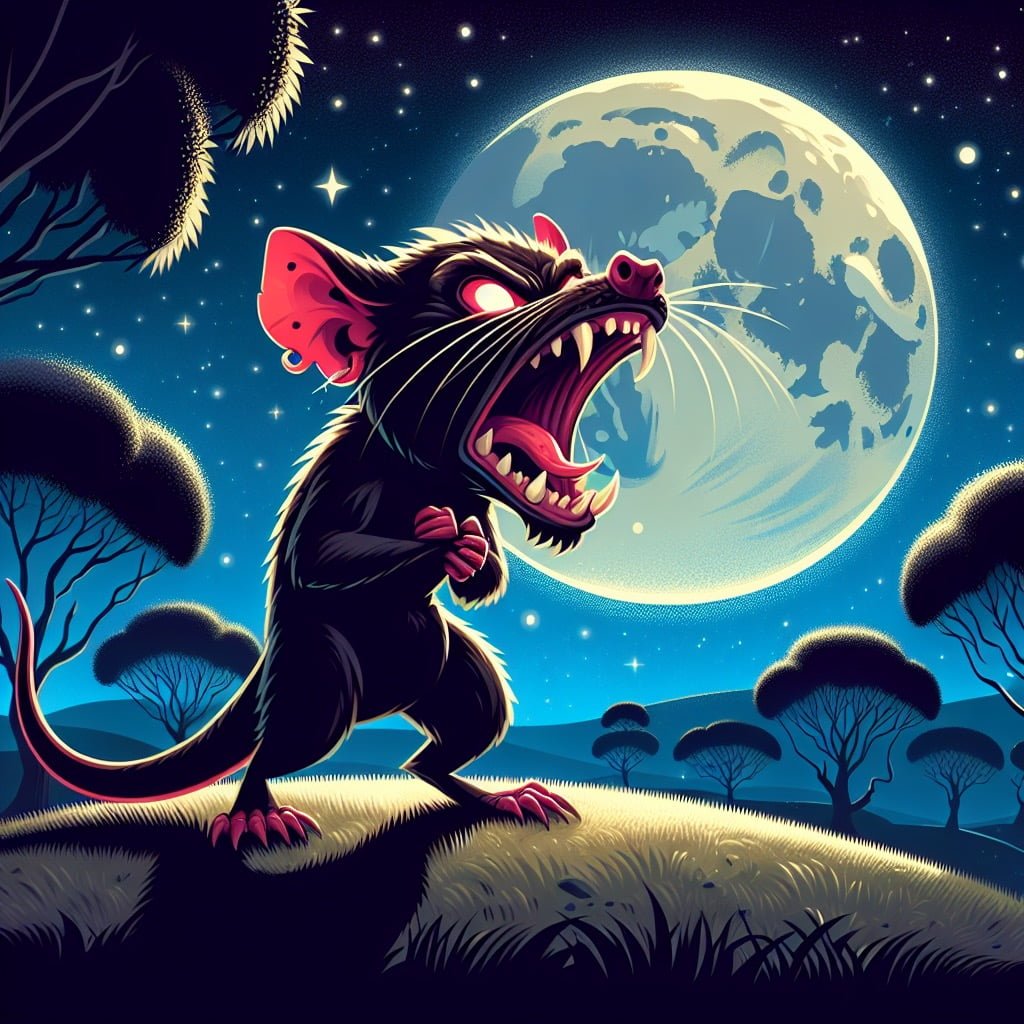
For younger kids: Tasmanian devils make really scary sounds like they’re howling at the moon!
For older kids: When they communicate, Tasmanian devils make chilling screeches and growls, creating a sound that’s both eerie and slightly frightening.
Detailed explanation:One of the most fascinating Australia Facts For Kids is the fact that the Tasmanian Devil makes eerie noises. This iconic Australian marsupial is known for its loud screeches, growls, and snarls that can be heard echoing through the forests of Tasmania. These eerie noises are used by Tasmanian Devils for communication with one another, especially during feeding times or when defending their territory.
The vocalizations of Tasmanian Devils serve various purposes, such as warning off competitors, establishing dominance, and attracting potential mates. The unique sounds produced by these animals are believed to be a result of their powerful jaw muscles and vocal cords, which allow them to create a wide range of vocalizations. When multiple Tasmanian Devils come together, the cacophony of their eerie noises can be quite intimidating and chilling to hear.
Interestingly, the vocalizations of Tasmanian Devils have also been studied by scientists to better understand their behavior and social structure. By listening to the different types of sounds produced by these animals, researchers have been able to gain insight into their communication patterns and social dynamics. This research has helped shed light on the complex nature of Tasmanian Devil societies and how they interact with one another in the wild.
In conclusion, the eerie noises made by Tasmanian Devils are a fascinating aspect of their behavior that showcases the unique vocal abilities of these iconic Australian marsupials. By studying their vocalizations, scientists continue to uncover new insights into the lives of these intriguing creatures.
Australia Facts For Kids
4. Australia is Home to the World’s Largest Carnivorous Marsupial
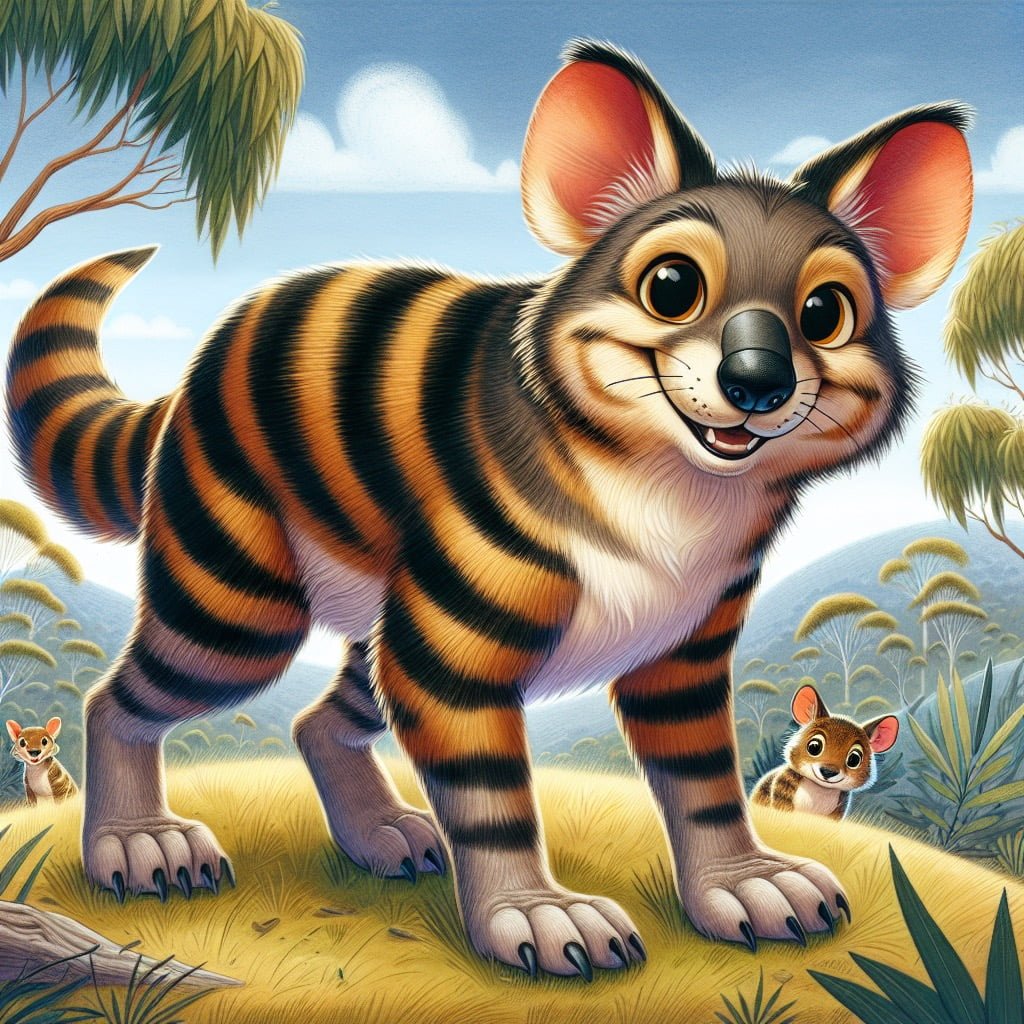
For younger kids: The Tasmanian wolf was like a big, scary dog, but it was actually a marsupial!
For older kids: The Tasmanian wolf, also known as the thylacine, was a unique marsupial carnivore that looked like a large, elongated dog and was the largest of its kind.
Detailed explanation:Australia Facts For Kids
One of the most fascinating Australia Facts For Kids is that Australia is home to the world’s largest carnivorous marsupial, the Tasmanian devil. This unique animal is native to the island of Tasmania, which is located off the southern coast of Australia. The Tasmanian devil is known for its stocky build, black fur, and loud, screeching vocalizations.
The Tasmanian devil primarily feeds on small mammals, birds, insects, and carrion. Its powerful jaws and sharp teeth allow it to easily crush bones and consume the entire carcass of its prey. Despite its ferocious reputation, the Tasmanian devil is actually a shy and solitary animal, preferring to avoid confrontation with humans.
Unfortunately, the Tasmanian devil population has been heavily impacted by a contagious cancer known as Devil Facial Tumor Disease (DFTD). This disease, which is spread through biting during aggressive interactions, has led to a significant decline in the wild Tasmanian devil population. Conservation efforts are currently underway to protect and preserve this iconic Australian species.
In addition to the Tasmanian devil, Australia is also home to other unique marsupials such as kangaroos, wallabies, and koalas. These animals have adapted to their environment over millions of years and play a crucial role in the ecosystem of Australia. Learning about these fascinating creatures is not only educational but also helps to raise awareness about the importance of conservation and preservation of Australia’s diverse wildlife.
Australia Facts For Kids
5. Australian Parrots Can Mimic Human Speech

For younger kids: Some parrots in Australia can talk and sound like people!
For older kids: Certain species of Australian parrots, such as cockatoos and parakeets, have the ability to mimic human speech and other sounds they hear in their environment.
Detailed explanation:Australian Parrots are known for their remarkable ability to mimic human speech. This fascinating behavior has captured the attention of scientists and animal lovers alike, as these birds are able to accurately imitate words and phrases with surprising clarity.
One of the most well-known species of Australian Parrots that possess this talent is the Galah, also known as the Rose-breasted Cockatoo. These colorful birds are not only skilled at mimicking human speech, but they can also mimic sounds from their environment, such as other bird calls and even phone ringtones. This ability is believed to be a result of their highly social nature and advanced vocal capabilities.
In the wild, Australian Parrots use their mimicry skills as a form of communication within their flock. By imitating the calls of other birds or even predators, they can effectively warn their group of potential dangers or signal the location of food sources. This behavior is not only practical, but also showcases the intelligence and adaptability of these birds.
For those interested in learning more about Australia Facts For Kids, observing Australian Parrots in their natural habitat or interacting with them in aviaries can be an exciting and educational experience. These birds serve as a prime example of the diverse and unique wildlife found in Australia, making them a popular attraction for both locals and tourists alike.
Australia Facts For Kids
6. The Echidna is a Unique Egg-Laying Mammal

For younger kids: Echidnas lay eggs like birds, but they’re still furry like a puppy!
For older kids: The echidna, also known as the spiny anteater, is a fascinating monotreme mammal that lays eggs, making it one of only five egg-laying mammal species in the world.
Detailed explanation:The Echidna, also known as the spiny anteater, is a fascinating creature that is native to Australia. It is one of only five existing species of monotremes, which are mammals that lay eggs instead of giving birth to live young. This makes the Echidna a truly unique animal in the animal kingdom.
One of the most interesting Australia Facts For Kids about the Echidna is its reproductive process. Female Echidnas lay a single egg, which is then incubated in a pouch-like structure on her lower abdomen. After about 10 days, the egg hatches and a tiny, pink, hairless baby known as a puggle emerges. The mother Echidna then feeds the puggle with milk produced by mammary glands that secrete milk through specialized openings in the skin. The puggle stays in the pouch for about 45-55 days until it starts to develop spines, at which point it is transferred to a burrow for further protection and care.
Another interesting aspect of the Echidna is its unique method of reproduction. Male Echidnas have a four-headed penis, but interestingly, only two of the heads are used during mating. This is thought to be an adaptation to the female Echidna’s two-branched reproductive tract.
In conclusion, the Echidna is a truly remarkable creature that showcases the diversity of Australia’s wildlife. Its unique combination of mammalian and reptilian characteristics make it a fascinating subject of study for biologists and a favorite among children learning about Australia.
Australia Facts For Kids
7. Australia is the World’s Largest Island
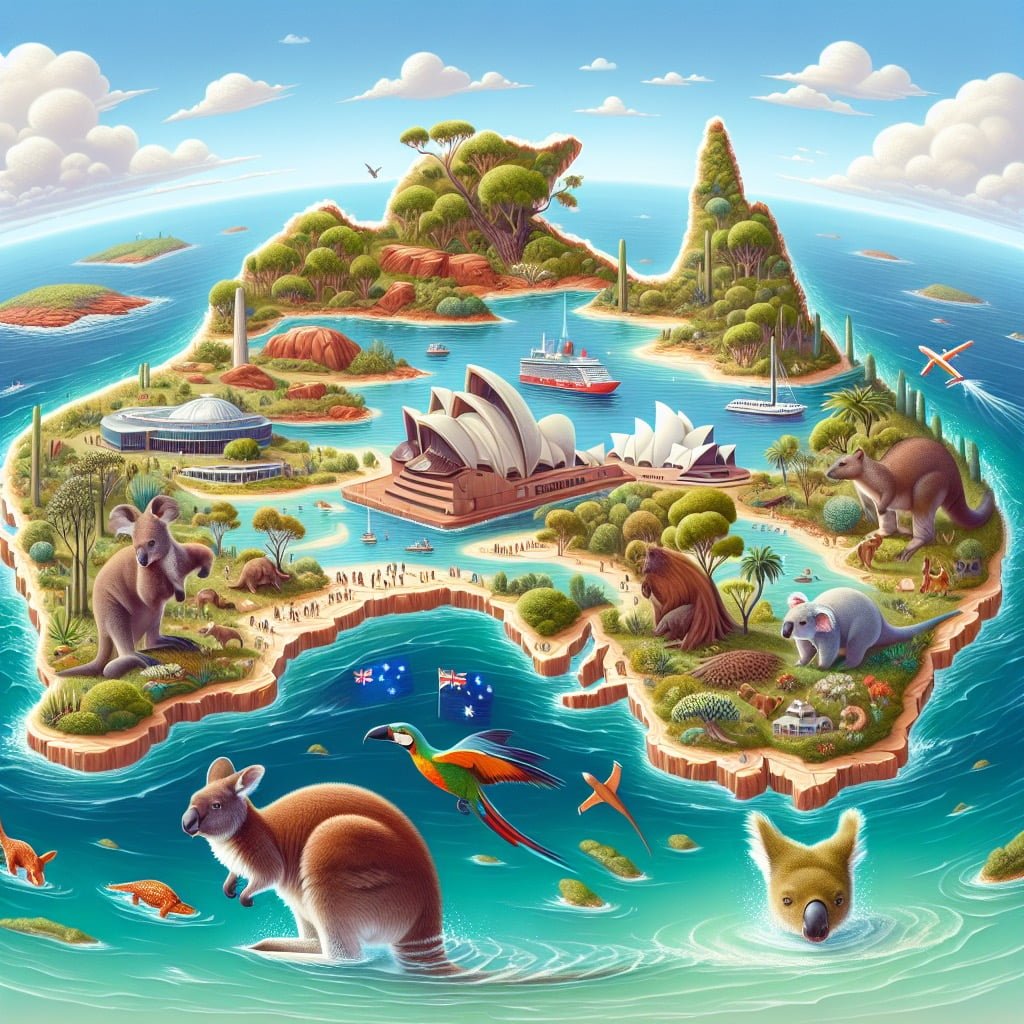
For younger kids: Australia is such a big island that it’s also a whole country!
For older kids: Despite its size, Australia is not only a country but also the world’s largest island, surrounded by the Indian and Pacific Oceans.
Detailed explanation:Australia, as a continent, is often referred to as the world’s largest island. This may seem like a paradox, as islands are typically thought of as smaller landmasses surrounded by water. However, the classification of Australia as an island is not based on its size alone, but on geological and geographical criteria.
Australia is classified as an island because it is completely surrounded by water. While it is the smallest continent in the world, it is significantly larger than many other islands, such as Greenland and New Guinea. Australia’s landmass covers approximately 2.9 million square miles, making it larger than all other islands in the world.
Furthermore, Australia’s unique geographical features contribute to its classification as an island. It is separated from other continents by vast oceans, including the Indian Ocean to the west and the Pacific Ocean to the east. This isolation has led to the evolution of diverse ecosystems and wildlife found nowhere else on Earth. From the Great Barrier Reef to the Outback, Australia offers a wide range of landscapes and habitats that showcase its natural beauty and biodiversity.
In conclusion, Australia’s status as the world’s largest island is not simply based on its size, but on its geological isolation and unique characteristics. By understanding these Australia Facts For Kids, we can appreciate the significance of Australia as a continent-island and its importance in the global landscape.
Australia Facts For Kids
8. The Deadly Redback Spider is Native to Australia
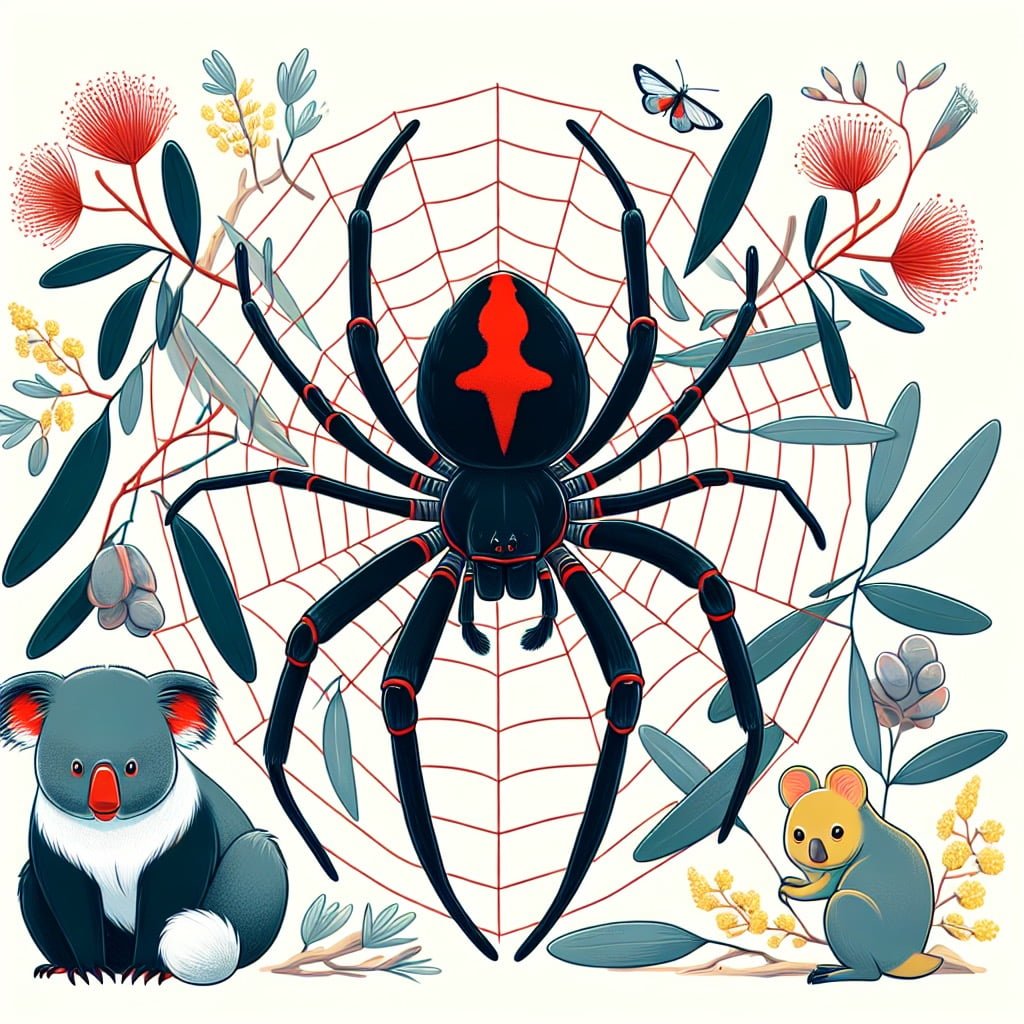
For younger kids: The redback spider has a scary name and a dangerous bite, so watch out!
For older kids: The redback spider, known for its distinctive red stripe and venomous bite, is a native arachnid species of Australia, found in urban and rural areas.
Detailed explanation:Australia Facts For Kids
The Deadly Redback Spider is a species native to Australia and is well-known for its potent venom. This spider belongs to the same family as the black widow spider, and is easily recognizable by the red stripe on its abdomen. While the redback spider is commonly found in urban areas, it prefers to reside in dark, sheltered locations such as under rocks, in logs, or in sheds.
Australia Facts For Kids
The venom of the redback spider is neurotoxic and can be deadly to humans, particularly children and the elderly. If bitten, symptoms may include severe pain, sweating, muscle weakness, nausea, and vomiting. In severe cases, the venom can cause paralysis and even death. Despite these dangers, fatalities are rare due to the availability of antivenom and prompt medical treatment.
Australia Facts For Kids
The redback spider is known for its distinctive courtship behavior, where the male presents a silk-wrapped insect to the female as a gift before mating. This behavior helps to prevent the female from potentially cannibalizing the male during mating. After mating, the female redback spider may lay several egg sacs, each containing hundreds of eggs. Once the eggs hatch, the spiderlings disperse and start their own independent lives.
In conclusion, the Deadly Redback Spider is a fascinating yet dangerous creature native to Australia. While it may pose a threat to humans, it plays an important role in the ecosystem as a predator of insects. Understanding the behavior and habitat of this spider is crucial for both safety and conservation efforts in Australia.
Australia Facts For Kids
9. The Australian Box Jellyfish is One of the Most Venomous Sea Creatures

For younger kids: The box jellyfish is really pretty, but also really dangerous!
For older kids: With its translucent bell and long, trailing tentacles, the Australian box jellyfish is one of the deadliest marine animals, capable of delivering a lethal sting to humans.
Detailed explanation:The Australian Box Jellyfish is indeed one of the most venomous sea creatures in the world, making it a fascinating yet dangerous marine animal. Found primarily in the waters off northern Australia, this jellyfish is known for its transparent bell and long tentacles that can extend up to 3 meters in length. The tentacles are covered with thousands of tiny, venom-filled nematocysts that can deliver an extremely potent toxin to its prey or any unfortunate human that comes into contact with them.
One of the reasons why the Australian Box Jellyfish is so dangerous is because of the potency of its venom. The venom contains toxins that attack the heart, nervous system, and skin cells, leading to symptoms such as extreme pain, difficulty breathing, and even cardiac arrest. In fact, the venom is so potent that a single sting from a Box Jellyfish can be fatal to humans if not treated promptly.
Given the dangerous nature of this creature, it is important for beachgoers and swimmers in Australia to be aware of the risks posed by the Australian Box Jellyfish. Stinger nets and warning signs are often put in place at popular beaches to help prevent encounters with these venomous jellyfish. It is also recommended to wear protective clothing such as wetsuits while swimming in waters where Box Jellyfish are known to inhabit.
In conclusion, the Australian Box Jellyfish is a unique and intriguing sea creature that serves as a reminder of the diverse and sometimes dangerous marine life found in Australia’s waters. Understanding the risks associated with these creatures can help to ensure a safe and enjoyable experience for all those who venture into the sea.
Australia Facts For Kids
10. Australia is Home to the Largest and Heaviest Reptile, the Saltwater Crocodile

For younger kids: The saltwater crocodile is a giant and super strong reptile that lives in the water!
For older kids: Growing up to 23 feet in length and weighing over 2,000 pounds, the saltwater crocodile is the largest reptile in the world, inhabiting the waters and estuaries across northern Australia.
Detailed explanation:Australia Facts For Kids are always fascinating, especially when it comes to unique and impressive wildlife. One of the most notable examples of this is the Saltwater Crocodile, which is not only the largest reptile in Australia but also the heaviest in the world. These incredible creatures can weigh up to 2,200 pounds and reach lengths of up to 23 feet, making them a true force to be reckoned with in the animal kingdom.
One of the reasons why the Saltwater Crocodile is able to grow to such impressive sizes is its environment. Australia’s vast and diverse landscape provides the perfect habitat for these creatures to thrive. With plenty of rivers, swamps, and mangroves to inhabit, Saltwater Crocodiles have ample food sources and space to grow. This unique ecosystem contributes to their impressive size and strength.
In addition to their physical attributes, Saltwater Crocodiles are known for their incredible hunting abilities. They are apex predators, meaning they sit at the top of the food chain and have no natural predators themselves. They are capable of taking down large prey, such as buffalo and even sharks, using their powerful jaws and sharp teeth. This makes them a formidable predator in their environment.
Overall, the Saltwater Crocodile is a truly remarkable creature that showcases the diverse and awe-inspiring wildlife found in Australia. Australia Facts For Kids would surely be amazed by the sheer size and power of these incredible reptiles that call the Australian waters home.
Did You Know?
Australia is home to more than 150 million sheep, making it the largest wool-producing country in the world.
Summary of Australia Facts For Kids
Australia is a land of endless wonder and excitement, with a wealth of fascinating information waiting to be discovered. From its unique animals like kangaroos, platypuses, and koalas to its natural wonders like the Great Barrier Reef and Uluru, Australia offers a plethora of engaging topics for young minds to explore.
In “Australia Facts For Kids,” children will learn about the world’s largest living organism, the Great Barrier Reef, and the country’s unique history as a former British penal colony. By delving into the diverse ecosystems and cultures of Australia, children will develop a greater appreciation for the wonders of our planet and the importance of conservation.
This blog post encourages curiosity and a love for knowledge, making it an educational and entertaining read for young readers. Whether your child is a budding scientist or simply interested in exploring new cultures, “Australia Facts For Kids” offers a gateway to a world of fascinating facts and discoveries. Start your journey today and uncover all the amazing tidbits that make Australia a truly special place to learn about!
Sources and additional information for Australia Facts For Kids
WikipediaBritannicaCIA World FactbookCentral Intelligence Agency (CIA)The World BankUnited Nations Children’s Fund (UNICEF)BBC NewsLonely PlanetCouncil on Foreign RelationsThe World Factbook (CIA)United NationsBBC Country ProfilesLonely PlanetThe World Bank CountriesUNESCO World Heritage CentreCountryReportsGlobalEdge (Michigan State University)Transparency International – The Global Corruption Barometer
